LUCAS, John Seymour
John Seymour Lucas was born at Westminster, London on 21 December 1849, and baptised at St Martin in the Fields not until 26 November 1876, fourth son of Henry Lucas, a coach block maker, and his wife Elizabeth née Seymour, who married at St Bride Fleet Street, London on 23 February 1834, he was a grandson of William Lucas, late of King's Lynn, Norfolk. With the encouragement of an uncle, Lucas was apprenticed to a wood carver and then to a sculptor and at the age of sixteen, began a course of study with his cousin, John Templeton Lucas (1836-1880), a noted genre painter, but turned his attention to portrait painting and entered St Martin's Lane Art School and later the Royal Academy Schools where he met his future wife. Lucas’s artistic education included extensive travels around Europe, particularly Holland and Spain, where he studied the Flemish and Spanish Masters. In 1871, John was a 21-year-old student, living at 14 Long Acre, St Martin-in-the-Fields with his parents, 61-year-old Henry, who was born in London and 56-year-old Elizabeth, who was born in Lambeth and one of his many siblings 19-year-old Mary. He commenced exhibiting in 1872 and was elected an associate member of the Royal Academy in 1876 and a full Royal Academician in 1898. He married at St Giles, London on 18 July 1877, Marie Elizabeth née Cornelissen (24 September 1851-25 November 1921), daughter of Louis Dieudonne Cornelissen (12 January 1819-3 December 1889), an artist's colour-man, of Paris and London. In 1881, Lucas was a 30-year-old historical artist living at 21 Queen Square, St Pancras, London with his 30-year-old wife Marie, who was born in Paris and two children, Sydney Charles Seymour Lucas and Marie Ellen Grubbe. Lucas was an historical genre painter with a particular talent for realism in the depiction of costumes and interiors. Inspired by van Dyck and particularly Diego Velázquez, he excelled in depicting scenes from the English 16th to 18th century Tudor and Stuart periods and the English Civil War and the Jacobite rebellions. His first major work to achieve widespread public acclaim was ‘Rebel Hunting after Culloden’ 1884 and the following year produced ‘Preparing for the Voyage’ and executing over one hundred major oil paintings and a host of drawings. Lucas was also renowned as a set and costume designer for the historical dramas popular on the late Victorian and early Edwardian stage. By 1891 Lucas had moved to 1 Woodchurch Road, South Hampstead, London with a purpose-built studio, designed for him by his friend and fellow artist, architect Sydney Williams Lee (1841-1917) and remained there until his retirement. He made regular visits to Blythburgh, Suffolk and in 1911, when he and his wife were living at Hampstead, his two servants were both from Blythburgh. He retired from painting towards the end of the First World War and moved to Blythburgh where re-designed a house next to the church known as 'The Priory'. John Seymour Lucas was of The Priory, Walberswick when he died at Southwold Cottage Hospital on 8 May 1923 and was interred in Blythburgh churchyard. His collection of antique costumes was acquired by the London Museum upon his death.
Royal Academy Exhibits
from 14 Long Acre, London
1872 321 'such moral drugs I have'
650 Disturbed
1873 371 Search for a Light
558 The School Dame's Nap
from 7 John Street, Bedford Row
1874 122 A Musketeer
541 'Your Objection Sir'
591 Alfred Harmsworth, Esq.
the late Seymour Lucas
1923 1116 Augustus G Bryett - red & black chalk drawing
Works by This Artist
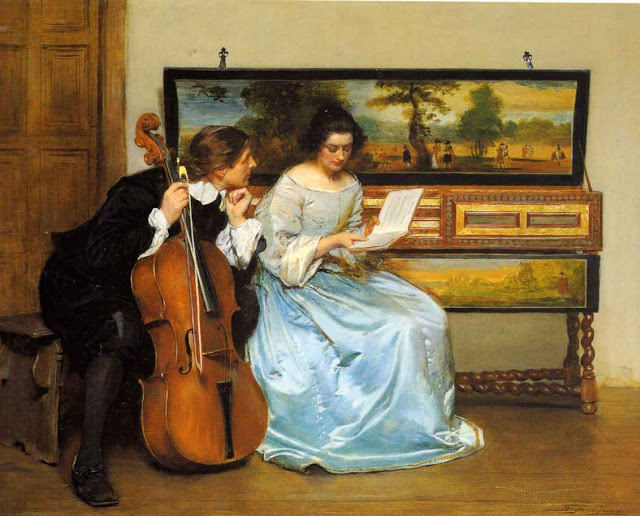
|
The IntervalOil on canvas
|
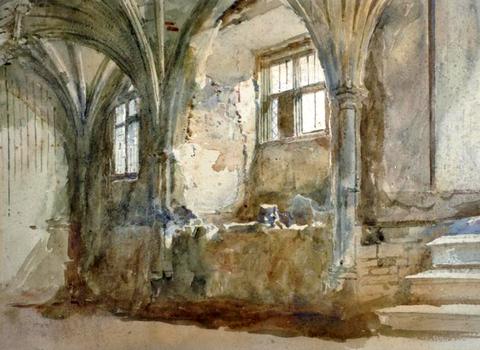
|
Interior of a Room with an Arched CeilingWatercolour
|
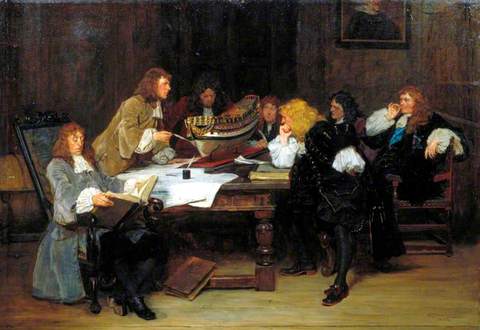
|
A New Whip for the DutchOil on canvas
|
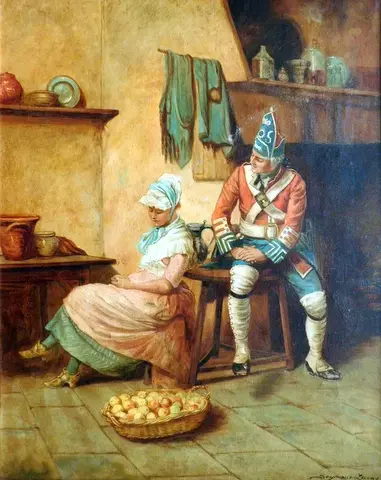
|
The ProposalOil on canvas
|
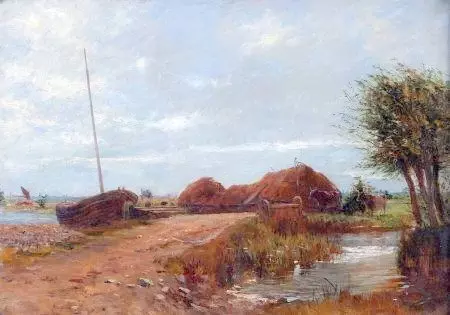
|
Acle DykeOil on canvas
|